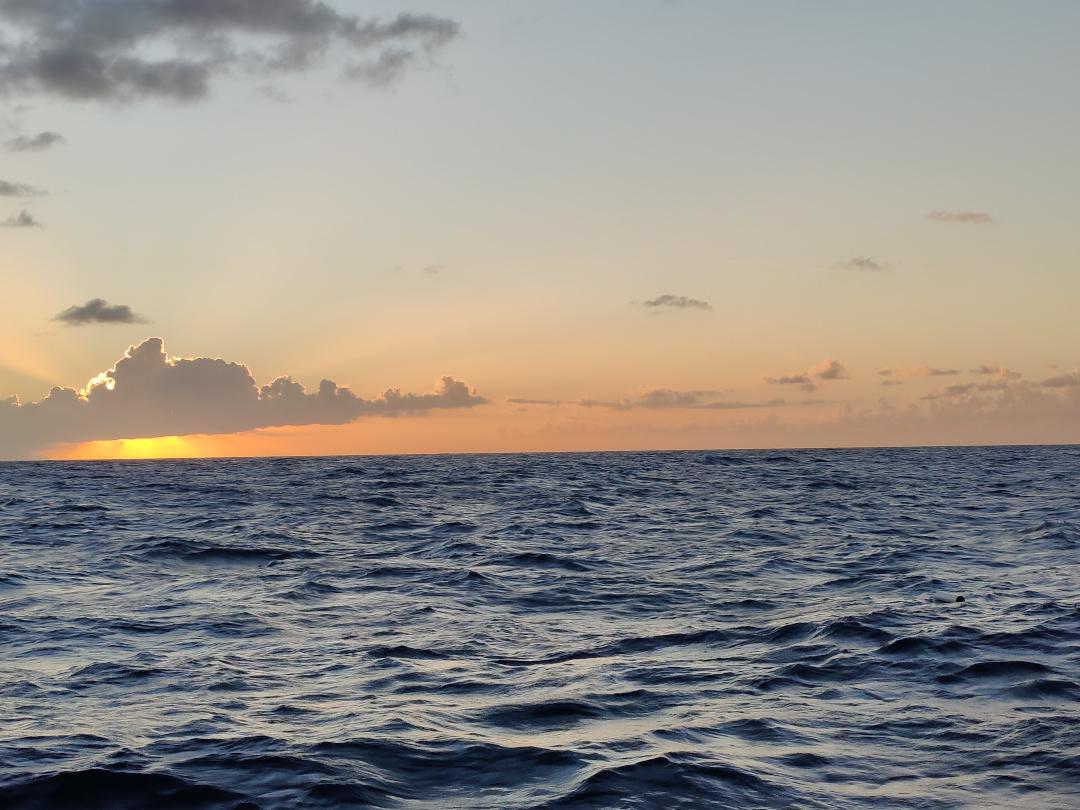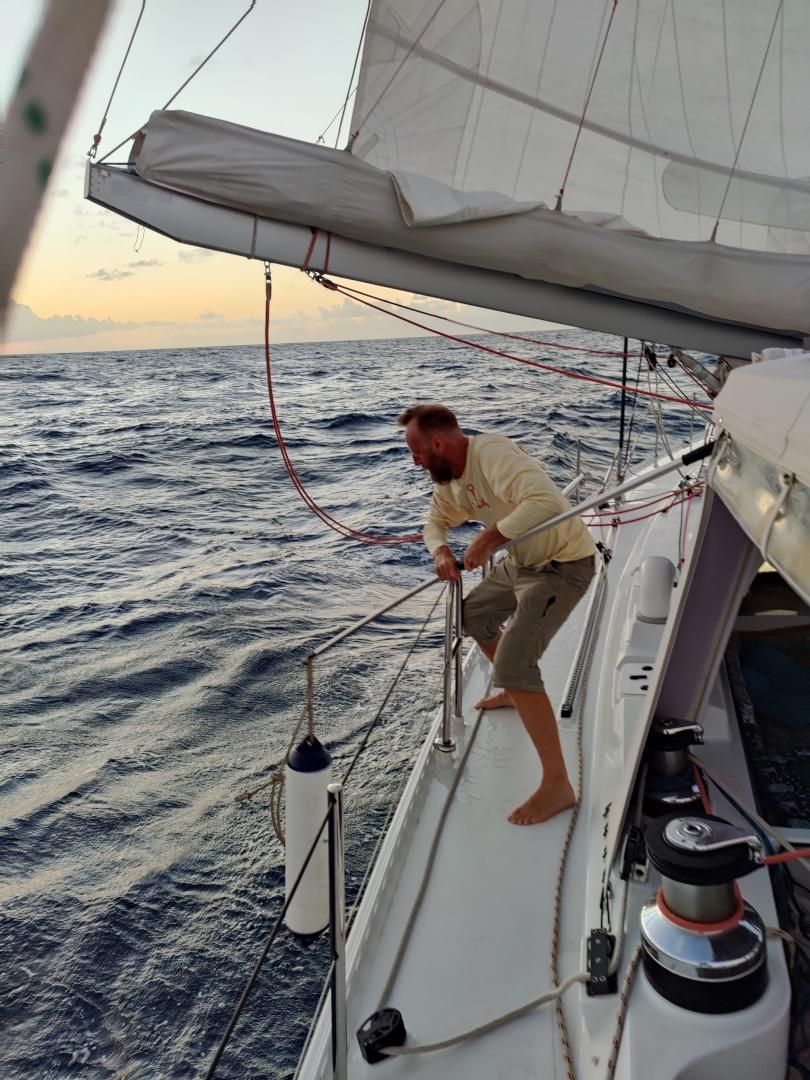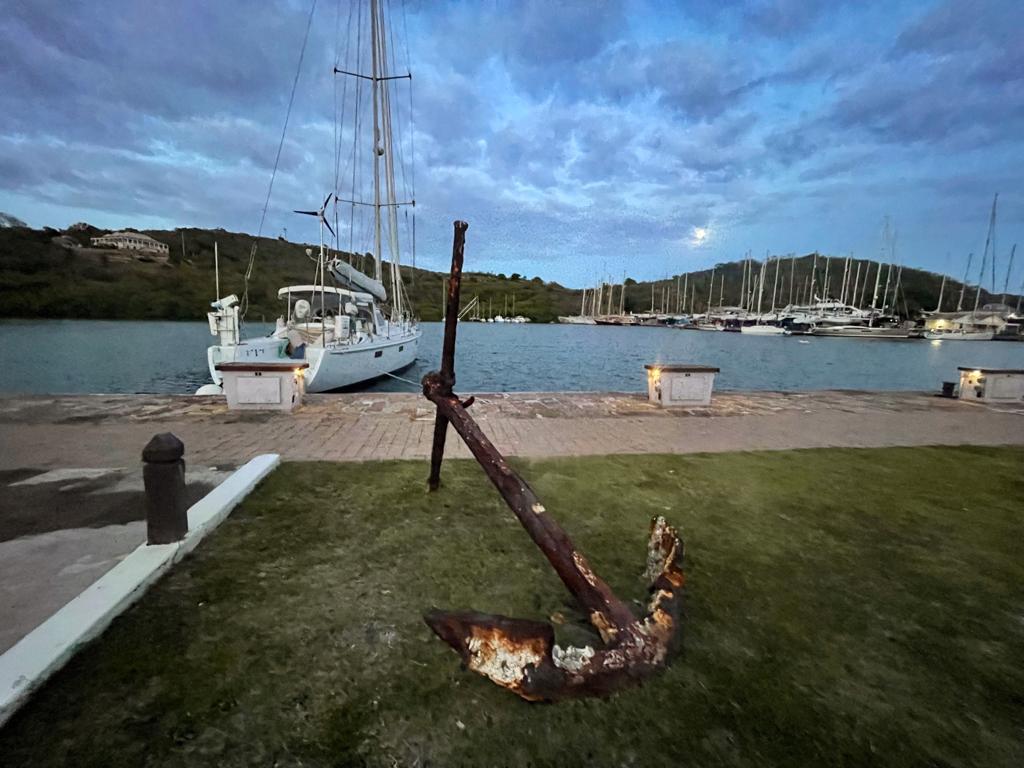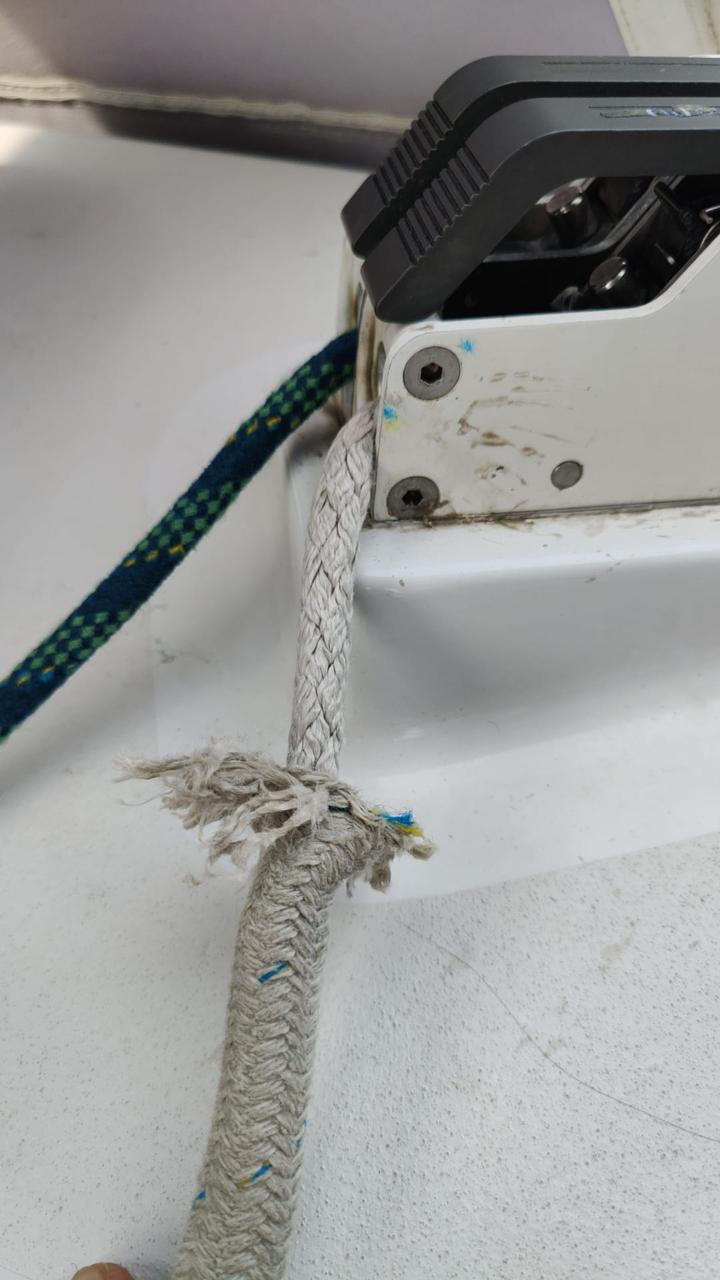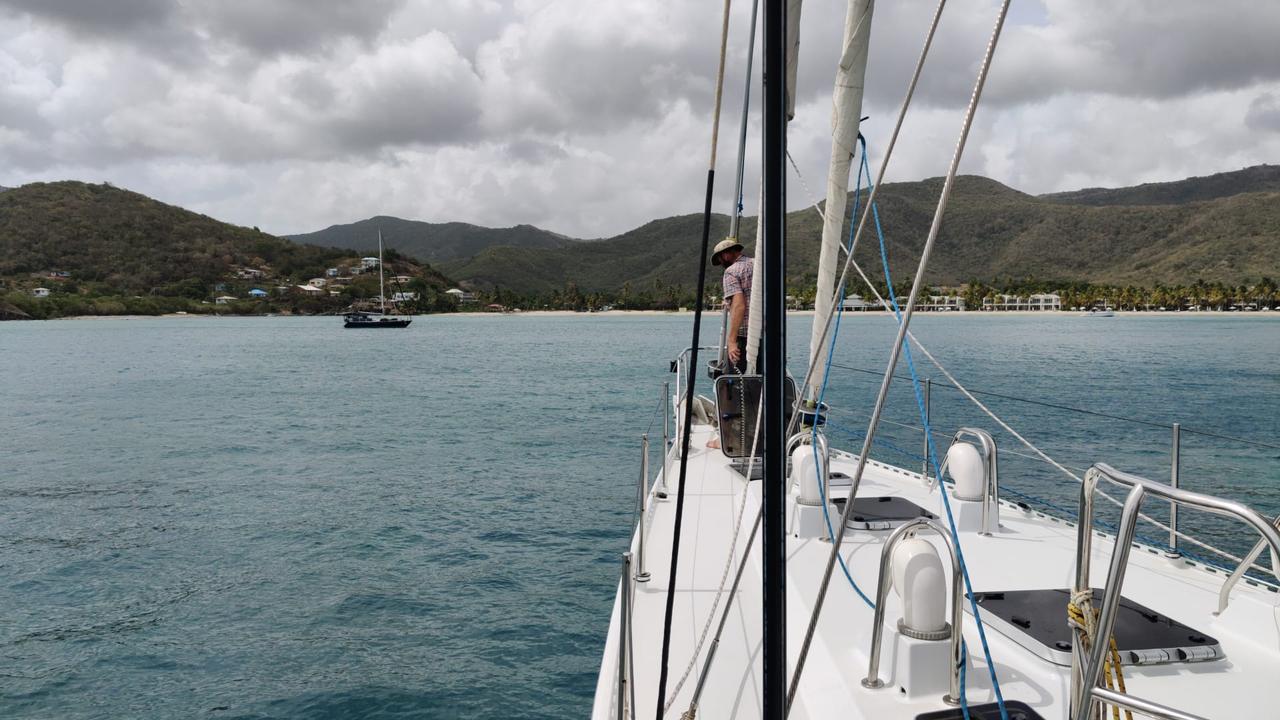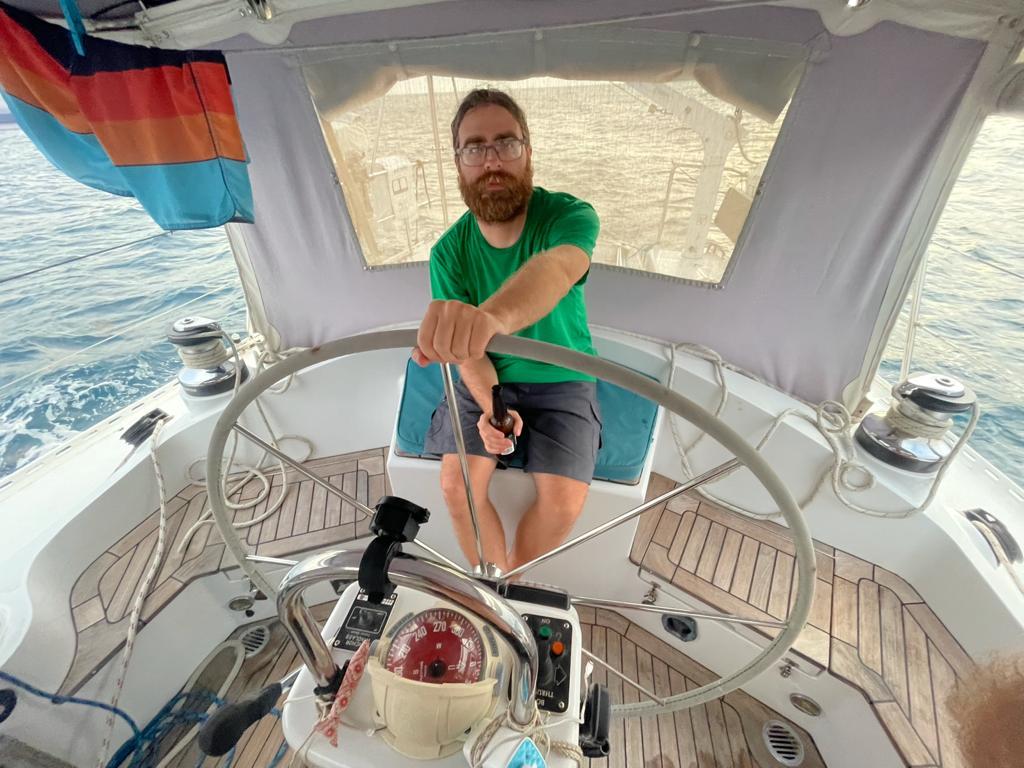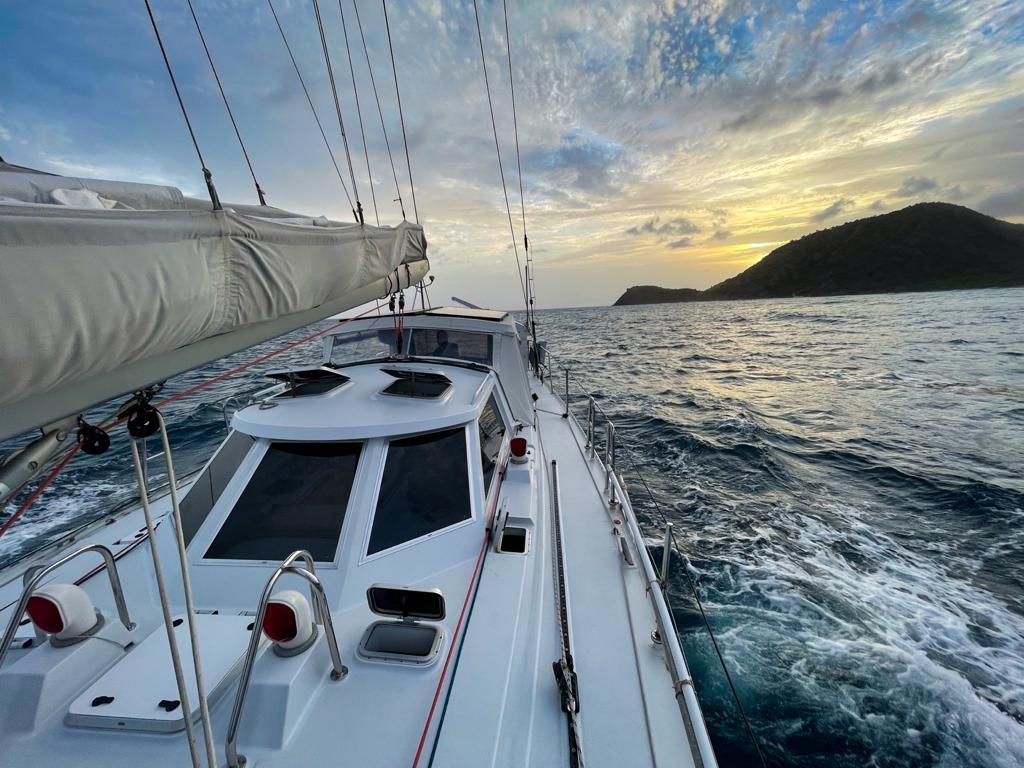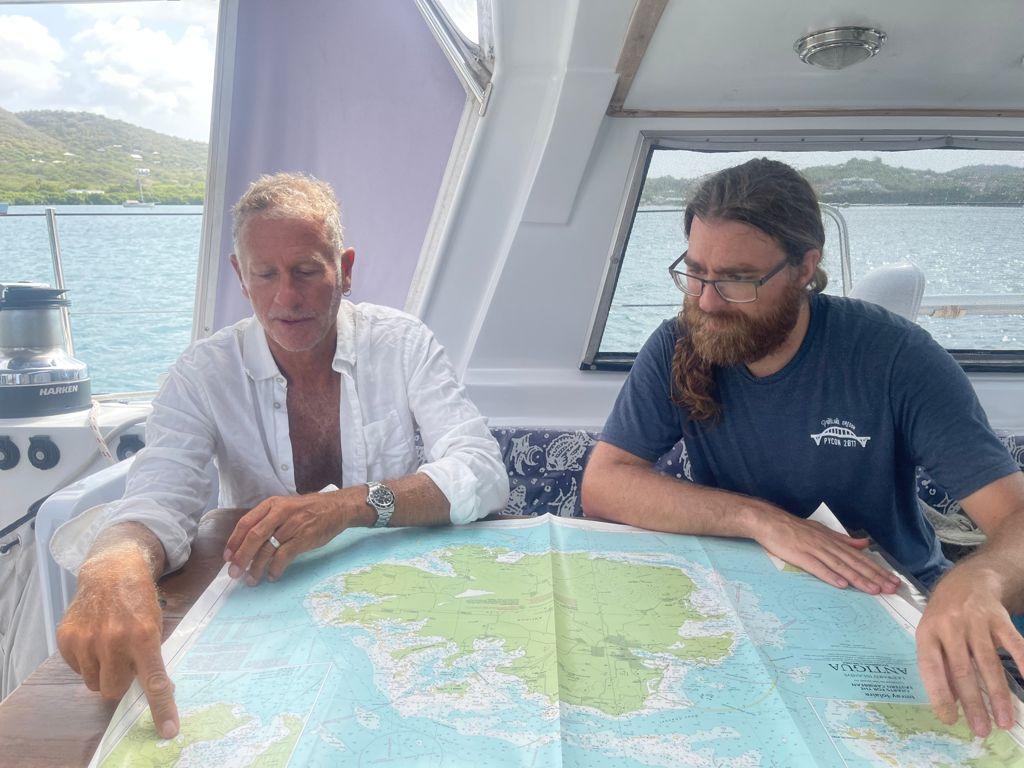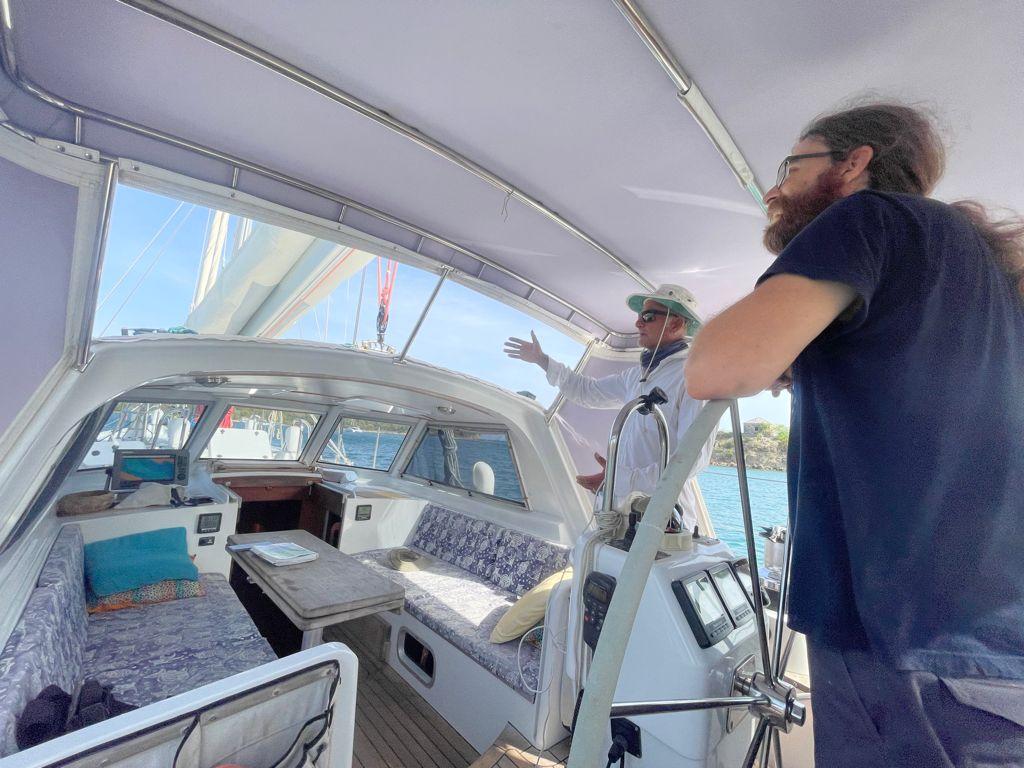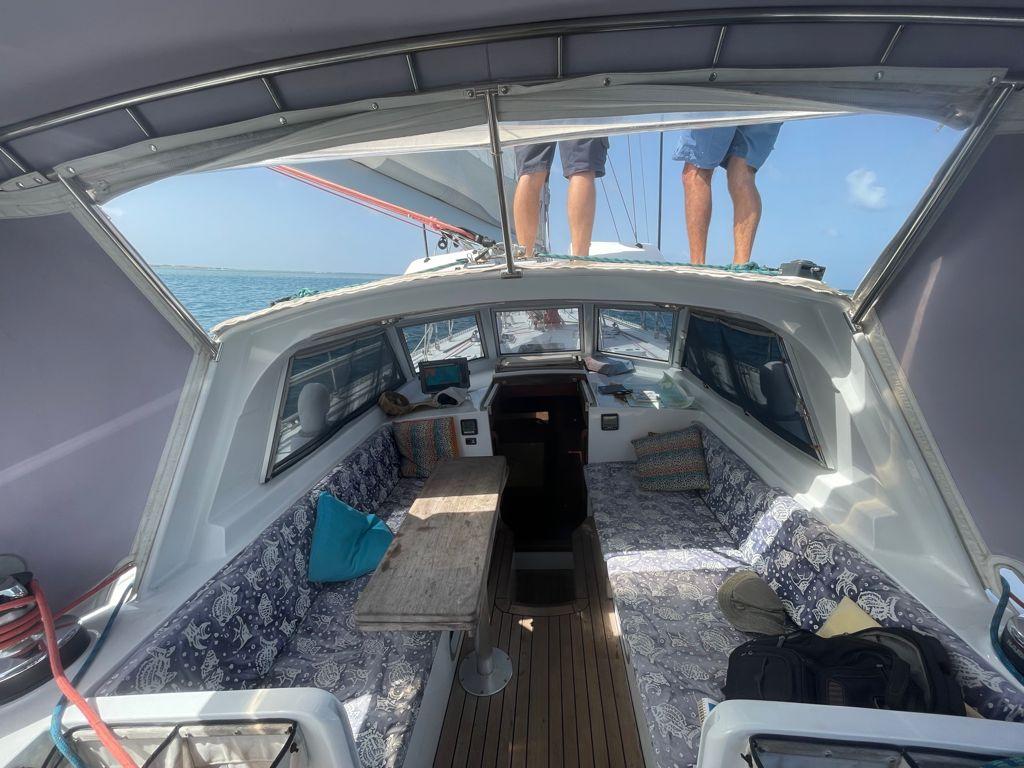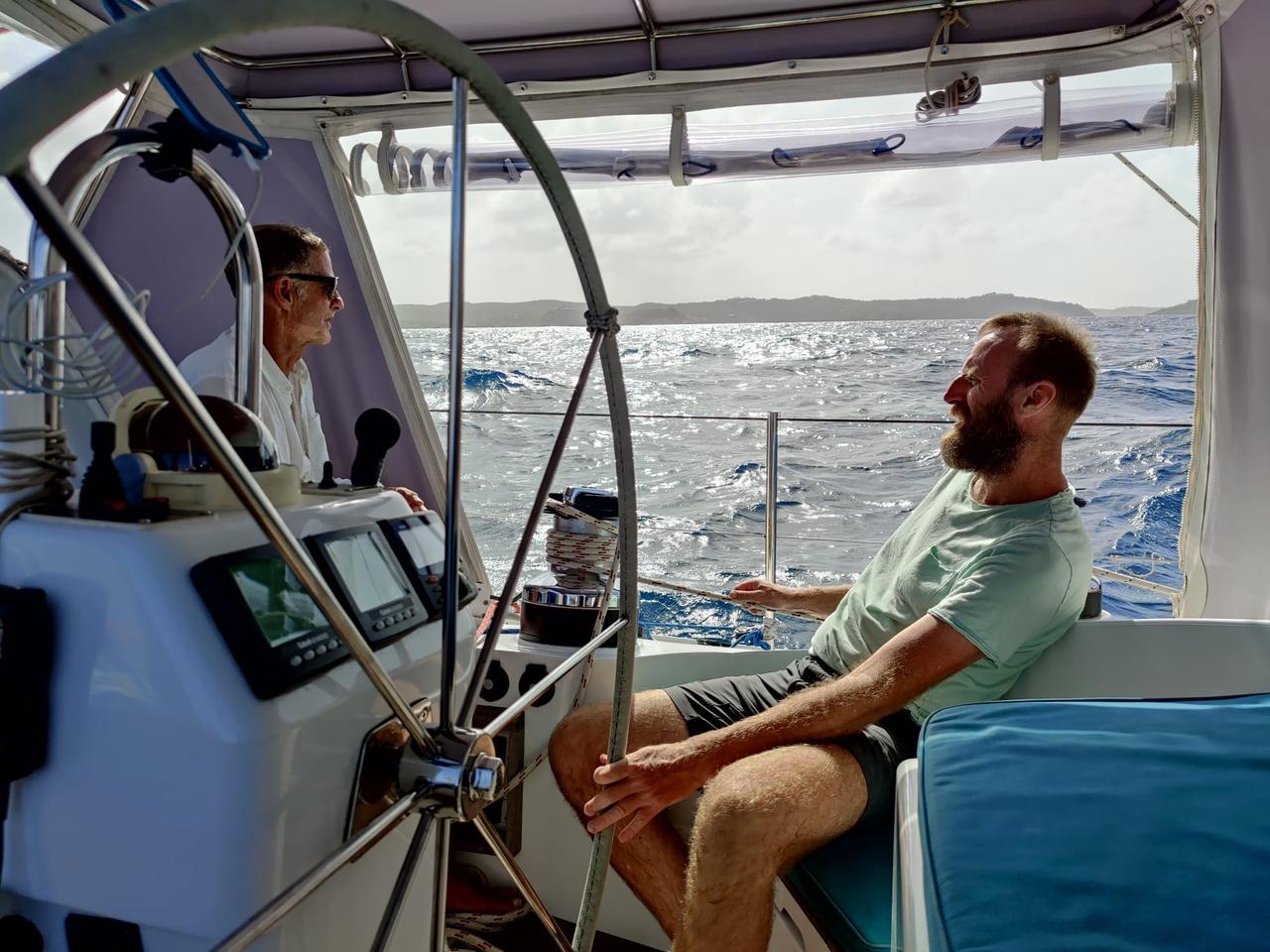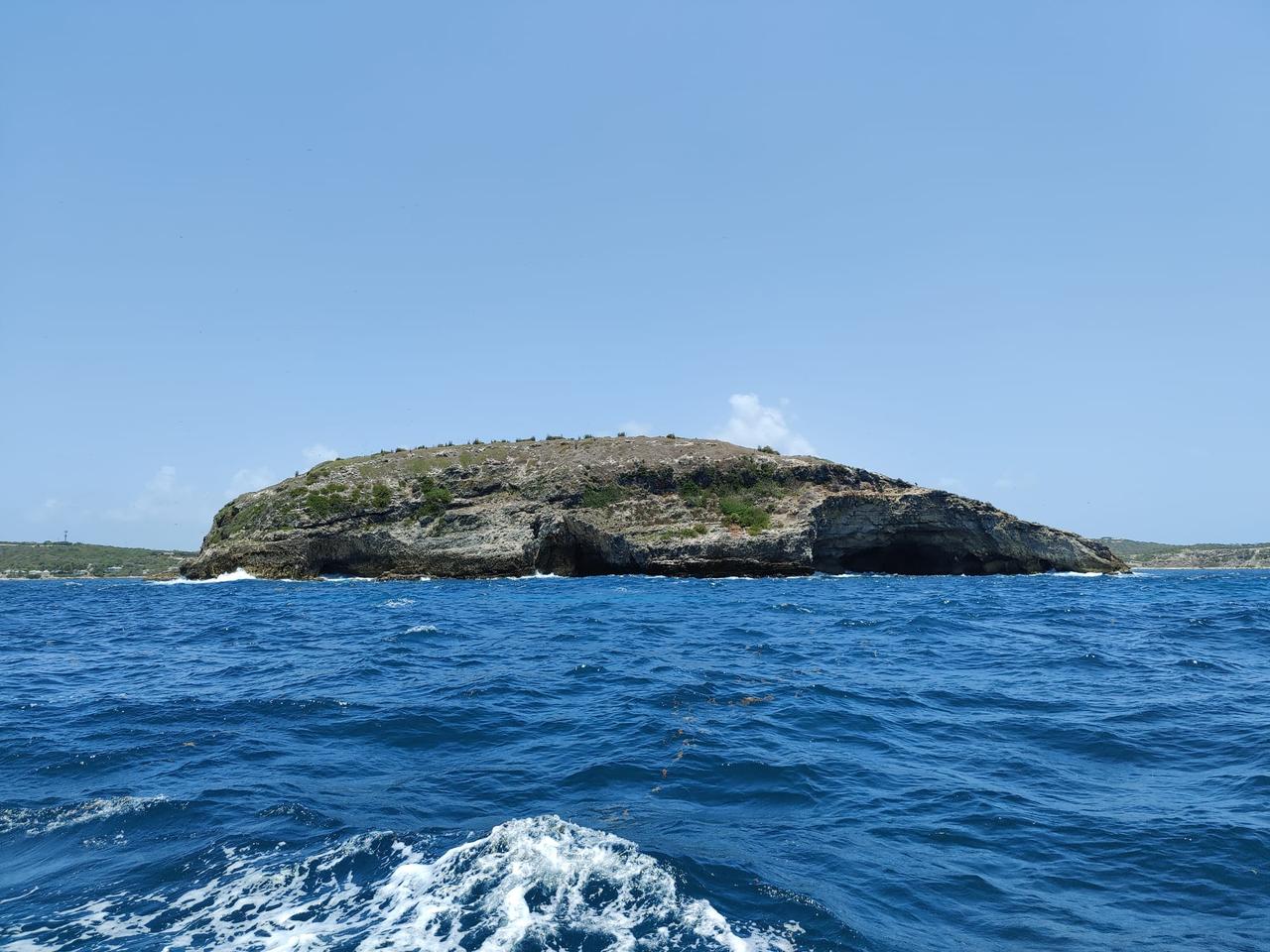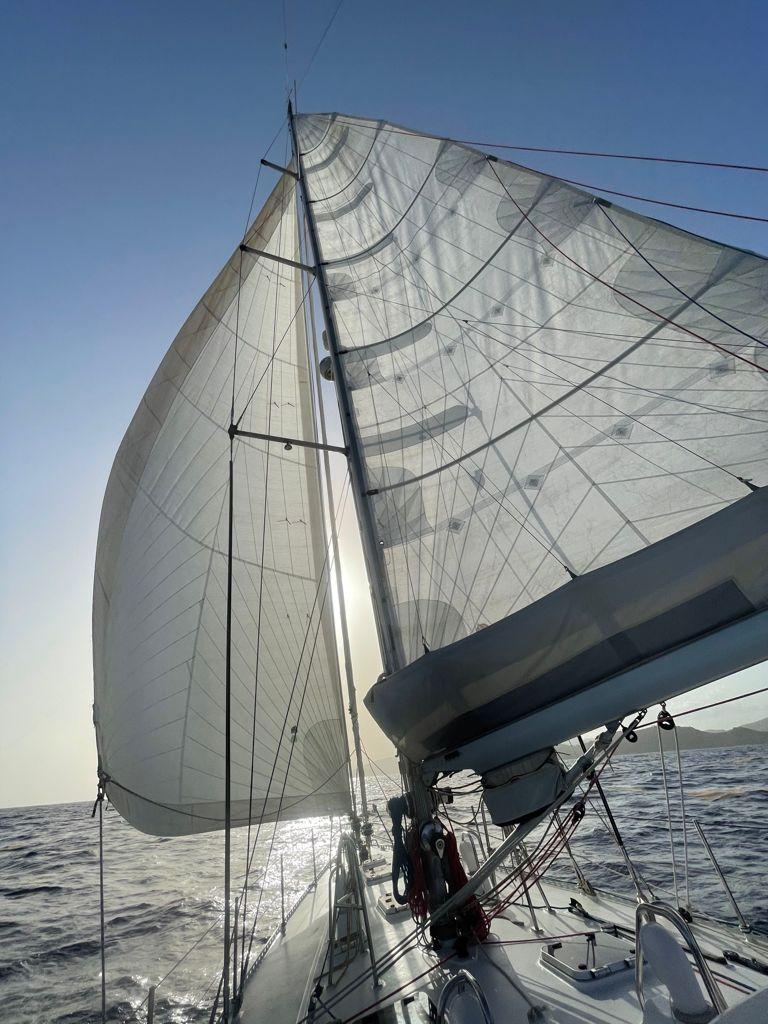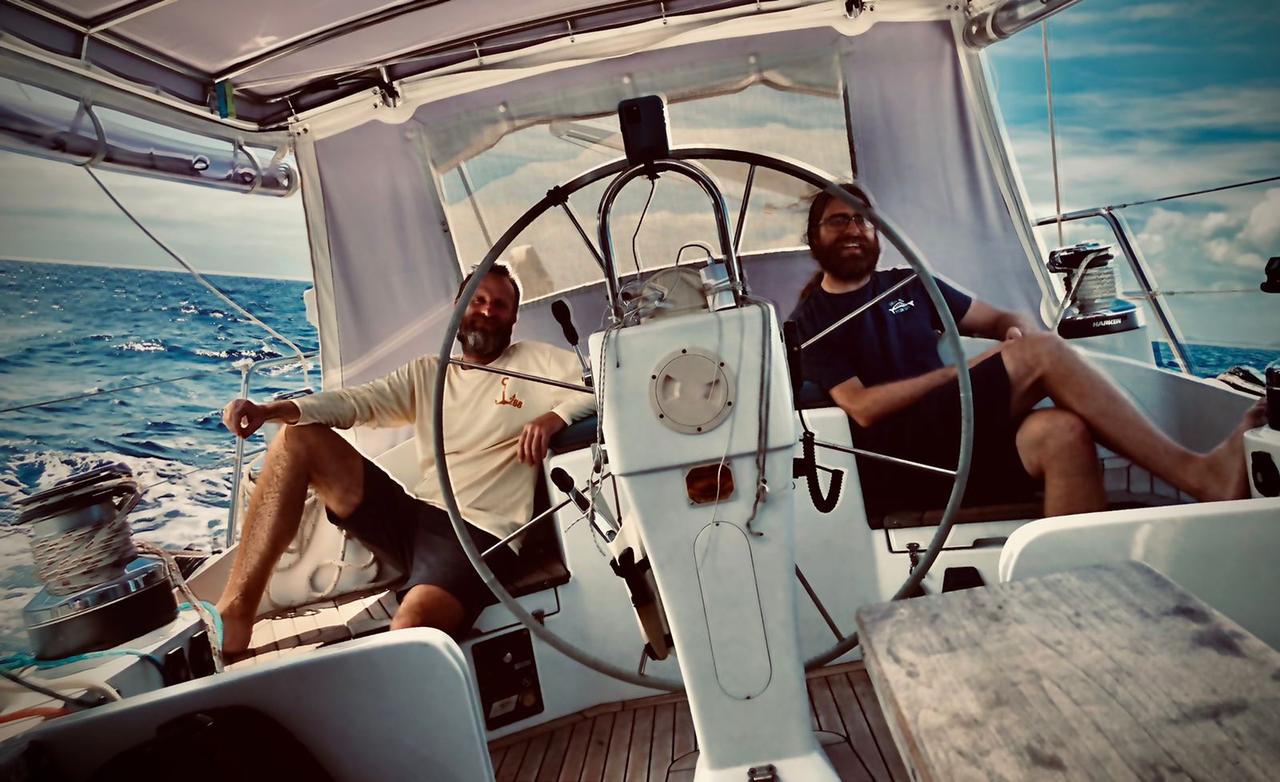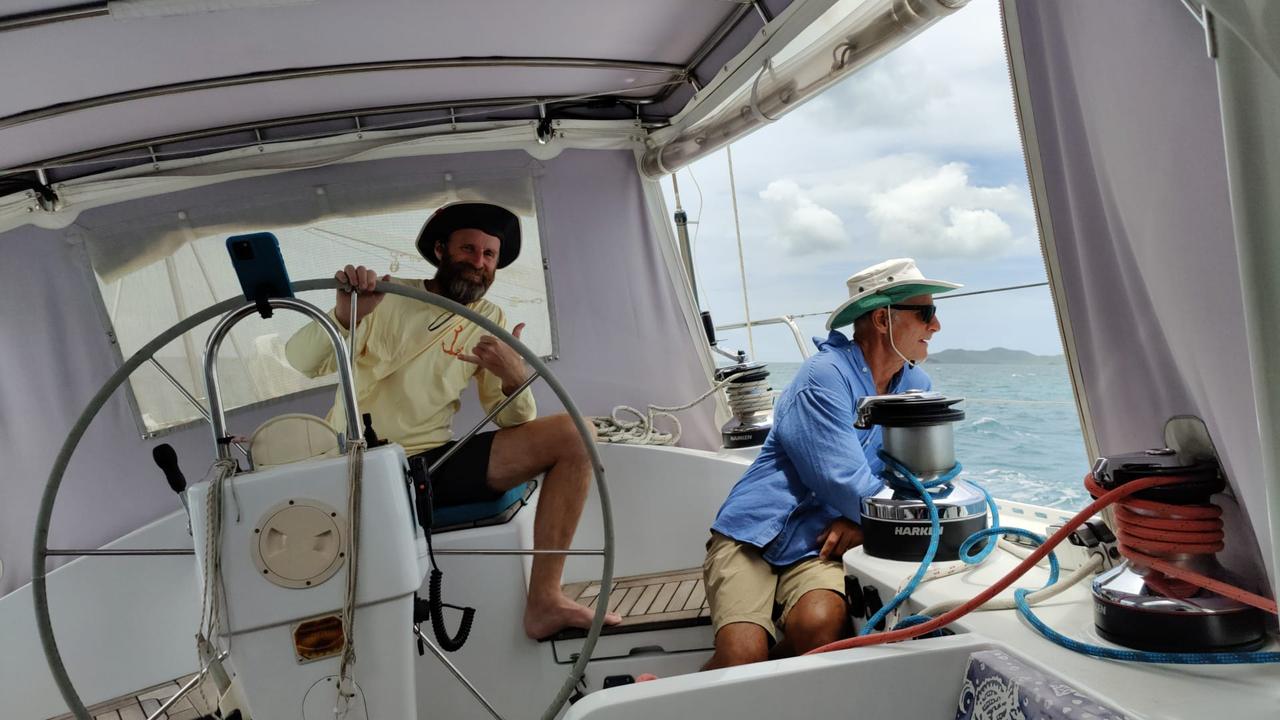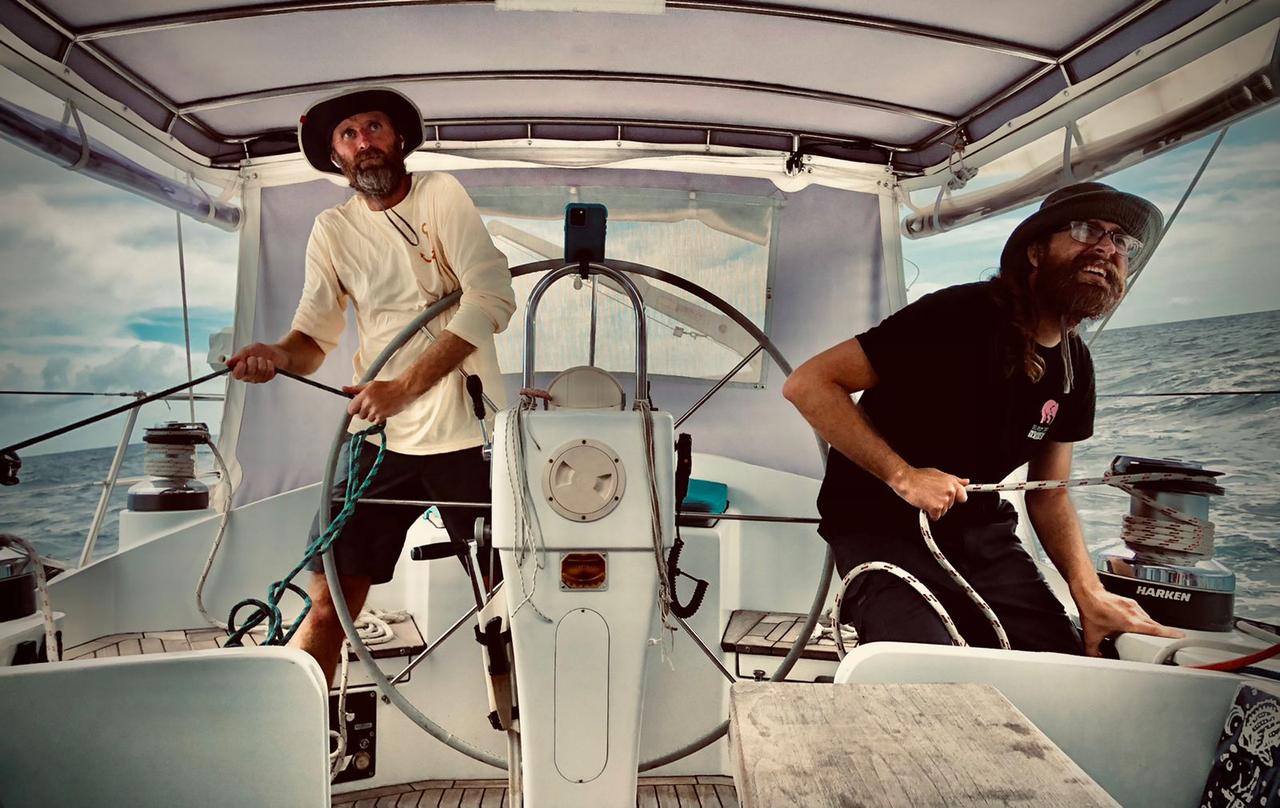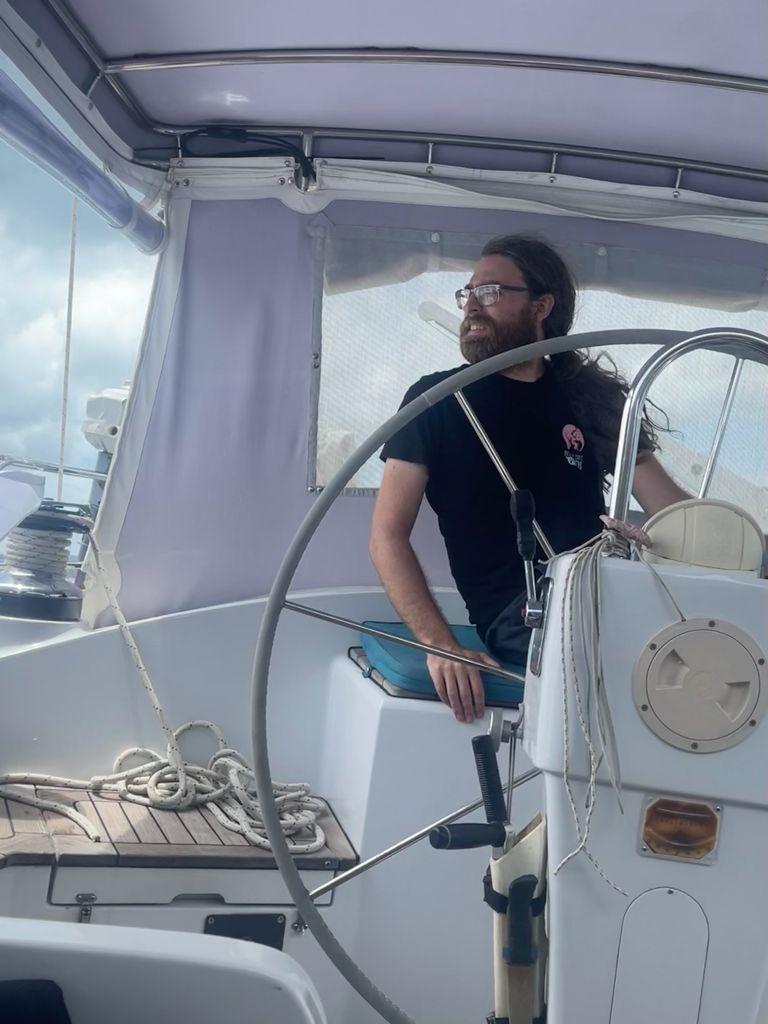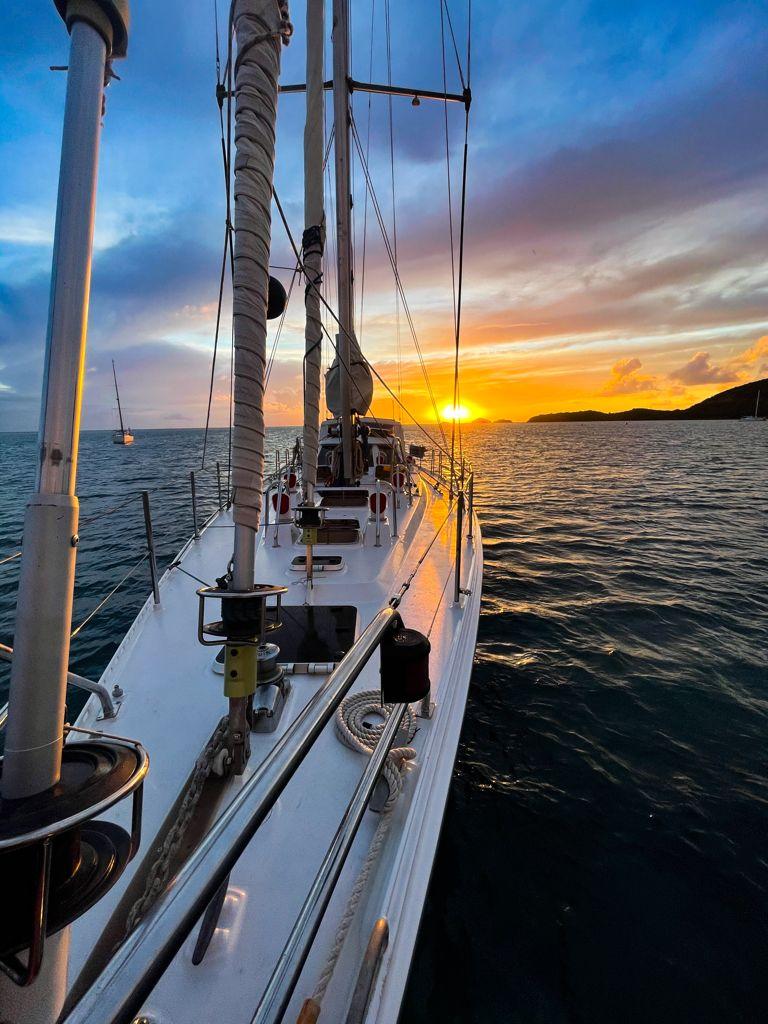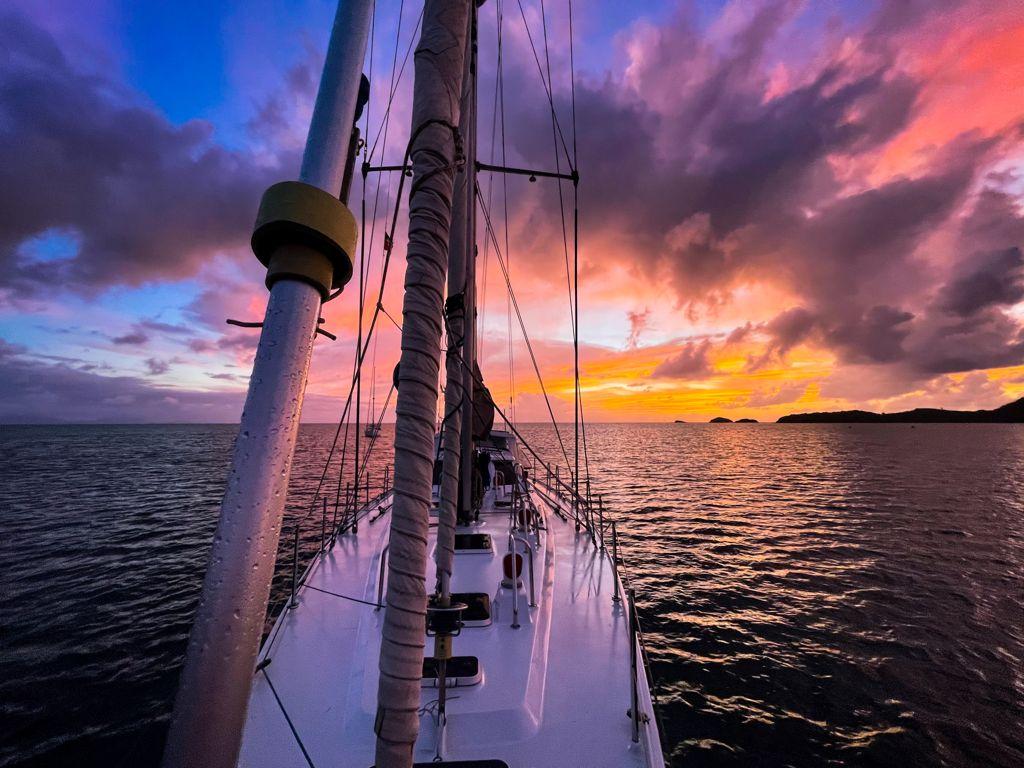Stronger winds (17kts), today, so we headed out for some man overboard
practice in big seas, and to practice some reverse manoeuvring in a
protected bay. Turned out to be quite an eventful day, in terms of
breaking things, at least...
Pulled up anchor and put our genoa in the anchorage, sailing out the
bay, through the channels, without needing the engine. Put up the main
out at sea, although we could have done it in the protection of the bay,
if we'd moved a little faster.
There was a reasonable swell offshore, and enough to make man overboard
practice fun. Planned to do a controlled gybe in the strong wind, so
pulled in the genoa, before-hand. But a little too fast, and got it
fouled on the furler, although we had no idea about this at the time. I
just thought I'd done a poor job of controlling releasing it while Johno
was furling.
Before the gybe, we forgot to completely release both running
back-stays, we only released the active tensioned one, not the lazy one
that was sitting on the winch, with the slack taken out of it. It got
caught on the boom, ripping its cover. First breakage of the day.
For the man-overboard practice, I was at the wheel, and Johno was
"overboard", in the guise of a fender that Alexis threw overboard for
me. I had to single-hand the rescue.
Marked the position on the chart-plotter, released the main, started the
engine, and came around for the fender. Didn't get close enough on the
first attempt (although, if a fender could swim, it could have rescued
itself, at that point). Johno and Alexis started fiddling with the
genoa, I figured it was something to do with the poor job furling it,
but they seemed to be dealing with it, so I kept trying to pick up the
fender. Soon, they realised that they couldn't get it under control in
the wind, and started to get sails down to make things more manageable.
Man overboard practice was over, the fender would have to swim for a
bit.
The badly-furled genoa had been furled at the bottom, but some bits
were hanging out up top, catching some wind and rubbing on things. The
sheets were caught up in the sail, on the furler. We got it under as
much control as we could, rescued the fender, and headed into Carlisle
Bay, to get out of the wind and fix the genoa properly.
On anchor in the bay, we were able to unfurl it, and re-furl it
correctly, after undoing the sheets, and attaching a temporary control
line. The sail-cover got rather torn in the process, and the leech hem
had come un-stitched, looking frayed. Second damage of the day.
While trying to get the sheets undone, above the anchor chain locker,
the lid fell on Alexis' toe. Third damage of the day.
Put it on ice, had some lunch, and then sailed back, with calmer winds,
doing one one man-overboard practice along the way. This was Johno, and
he dropped the mainsail, to motor back to the fender, on just the
staysail, successfully!
We'd been fiddling with the jammers, to get them to release from the
preventer lines (that are a little too big for them), during the day.
They have a wide-open mode that did the job. But at the end of the day,
we found that this had released the springs in the jammers. Looks like
we'll have to disassemble them to get the springs tensioned and sprung.
So, forth thing we broke.
Need to go and talk to riggers and sailmakers, in the next few days...
Time on the water: 7:57
Distance covered: 17nm
Avg speed: 2.1kts
Max speed: 9.9kts
Navionics Track
